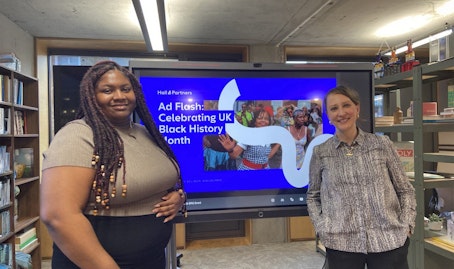Perspectives

Luxury marketing in the Middle East is on the brink of a transformation. If businesses want to cater to the needs of the region’s affluent consumers, the time to evolve is now. People are demanding more from their experience of buying a product – they want to be inspired and feel connected to the brand. They’re constantly seeking engaging experiences they can talk about, and which are part of a well-integrated, omnichannel experience.
I’ve worked in this region for several years and have seen first-hand how luxury consumers have evolved. So how can brands compete when faced with discerning shoppers? There are three key strategies which luxury marketers in this region must embrace:
1. Personalized communications
Brands are entering a new era in which luxury marketing meets the digital space. Their communications must revolve around rethinking marketing strategies and disrupting the cycle. It’s also vital that brands go digital without diminishing their exclusivity. This growth is only going to accelerate as millennials become leading spenders. The younger generation is constantly on the move, seeking brands that can cater to their needs in a timely manner. It’s no longer enough for a luxury brand to use linear communication channels. Brands must think beyond and know where to target their audience universally.
Stores will never lose their charm, especially for consumers in the Gulf. This is why it becomes even more essential for customer interactions to transcend channels for greater engagement. Personalized interactions have been made simpler with the use of WhatsApp and Chatbots. Even personal SMS marketing is highly appreciated. It’s extremely important for brands to embrace these platforms in order to stay constantly connected with their audiences – which, based on our research at Hall & Partners, is something luxury consumers in this region crave.
2. Take advantage of the experience economy
While the experience economy is already maturing in most global markets, it’s been slow to take off in the Middle East. Merely selling luxury products is no longer the endgame; brands must create spaces that provide consumers with the sensation of luxury. In a study Hall & Partners conducted recently, 41% of residents in the UAE and Saudi Arabia defined luxury as an “enriching experience”, while 17% associated it with travel experiences. This proves that integrating immersive experiences within a brand’s story has the potential to really resonate.
41% of residents in the UAE and Saudi Arabia defined luxury as an “enriching experience”
Virtual and augmented reality experiences are game changers as they create memorable brand perceptions. Recently, fashion and design brand YOOX and photo animation app Lumyer combined augmented reality and luxury fashion , creating a virtual reality camera app that allowed shoppers to try on handbags and jewelry. Back in 2015, Dior introduced its own virtual reality headset, Dior Eyes, which offered viewers the ultimate, immersive experience with backstage access to its latest runway show. Other luxury brands such as Armani, Versace, Dior, Bulgari, Ralph Lauren and Baccarat are extending their brand experiences to the travel sector with their designer hotels. These experiences need to stay relevant and authentic to leverage a brand’s value in the mind of its consumers.
3. Diversify your product
People in the Middle East don’t just want to wear luxury products … they want to live in a luxurious environment. There’s huge untapped potential in the region for fashion houses to merge with the ever-growing home furnishings market. When money’s not an issue, people are willing to invest beyond a single product into a complete lifestyle. According to Euromonitor, sales of homeware and furnishings in the UAE are expected to grow by 3.1% between 2017 and 2022, among those with a disposable income in excess of AED 25K.
This fusion can already be seen across the world with top luxury brands stepping into the world of homeware. Gucci Décor, for example, with its collection of furniture and decorative pieces, and Dolce & Gabbana’s foray into small appliances adorned with D&G’s signature decorative style. Brands have the opportunity to create a long-term bond with consumers, one that surpasses short-lived fashion trends. However, serious thought (and R&D) needs to go into this, in order to uphold the brand’s niche positioning and offering.
As the luxury market in the Middle East continues to grow, it’s time for marketers to lead this transformation and become as sophisticated as their audience. What other strategies would you use to cater to this luxury consumer mindset?








